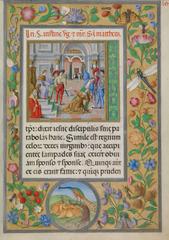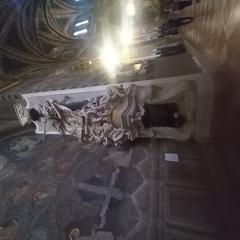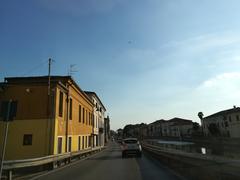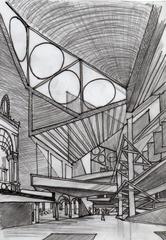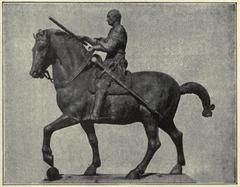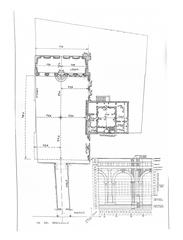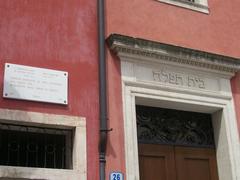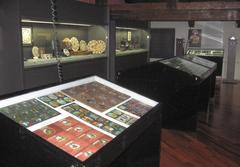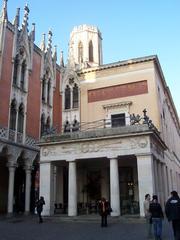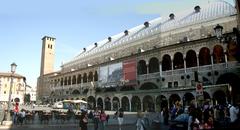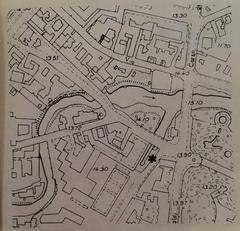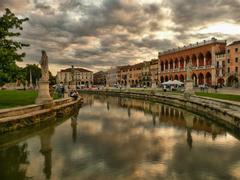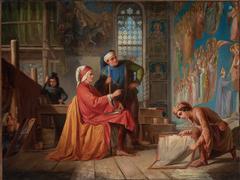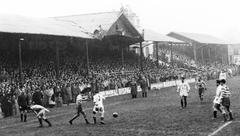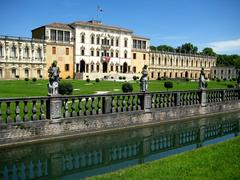Visiting Ponte delle Torricelle: A Complete Guide to History, Tickets, and Tips in Padua, Italy
Date: 19/07/2024
Introduction
The Ponte delle Torricelle, nestled in the historic city of Padua, Italy, is more than just a bridge; it is a testament to the architectural and cultural prowess of medieval Italy. Built in the 13th century, around 1260, this iconic structure has withstood the ravages of time, serving as a crucial conduit for trade and defense (Padua Tourism). Its name, ‘Torricelle,’ which translates to ‘small towers,’ hints at the defensive role it once played in protecting the city from invaders. The bridge’s impressive stone arches and robust construction are a marvel of medieval engineering, reflecting both functionality and aesthetic appeal. Over the years, the Ponte delle Torricelle has not only facilitated economic activity but also witnessed significant historical events, including the siege of Padua in 1509 during the War of the League of Cambrai (Historical Bridges of Italy). Today, it stands as a cultural symbol, drawing visitors from around the world to explore its rich history and architectural beauty.
Table of Contents
- Introduction
- Origins and Construction
- Architectural Significance
- Role in Medieval Padua
- Historical Events
- Restoration and Preservation
- Cultural Impact
- Modern-Day Significance
- Visitor Information
- Nearby Attractions
- FAQ Section
- Conclusion
Origins and Construction
The Ponte delle Torricelle, located in Padua, Italy, is a historical bridge that dates back to the medieval period. The bridge was constructed in the 13th century, a time when Padua was a flourishing city-state. The exact date of construction is not well-documented, but it is believed to have been built around 1260. The bridge was part of a larger network of fortifications designed to protect the city from invaders. Its name, “Torricelle,” translates to “small towers,” indicative of the defensive structures that once adorned the bridge.
Architectural Significance
The Ponte delle Torricelle is an exemplary piece of medieval engineering. It was constructed using local stone and features a series of arches that span the river. The bridge’s design is both functional and aesthetic, with its arches providing structural integrity while also allowing for the free flow of water beneath. The use of stone not only provided durability but also added to the bridge’s imposing appearance, which was crucial for its role in the city’s defenses.
Role in Medieval Padua
During the medieval period, Padua was a significant cultural and economic hub. The Ponte delle Torricelle played a crucial role in the city’s infrastructure. It facilitated trade and movement within the city and its surrounding areas. The bridge was strategically located to connect different parts of the city, making it easier for goods and people to move across the river. This connectivity was vital for the city’s economy, as it allowed for the efficient transport of goods to and from the city’s markets.
Historical Events
The Ponte delle Torricelle has witnessed numerous historical events over the centuries. One of the most notable events was the siege of Padua in 1509 during the War of the League of Cambrai. The bridge was a critical point of defense during the siege, and its fortifications were put to the test. Despite the intense conflict, the bridge survived, a testament to its robust construction.
Restoration and Preservation
Over the centuries, the Ponte delle Torricelle has undergone several restoration efforts to preserve its historical and architectural integrity. The most significant restoration took place in the 19th century when the bridge was in a state of disrepair. Local authorities recognized the bridge’s historical importance and undertook a comprehensive restoration project. This project involved reinforcing the bridge’s structure and restoring its original appearance as much as possible.
In recent years, further efforts have been made to preserve the bridge. Modern techniques and materials have been used to ensure that the bridge remains safe for use while maintaining its historical character. These efforts are crucial in preserving the bridge for future generations to appreciate.
Cultural Impact
The Ponte delle Torricelle is not just a historical structure; it is also a cultural symbol of Padua. The bridge has been featured in numerous works of art and literature over the centuries. It is a popular subject for painters and photographers, who are drawn to its picturesque appearance and historical significance. The bridge also plays a role in local folklore and traditions, with many stories and legends associated with it.
Modern-Day Significance
Today, the Ponte delle Torricelle remains an important landmark in Padua. It is a popular tourist attraction, drawing visitors from around the world who come to admire its historical and architectural beauty. The bridge is also used for various cultural and community events, further cementing its role as a vital part of the city’s heritage.
Visitor Information
Visiting Hours and Ticket Prices
- The bridge is accessible to the public 24/7, but guided tours are available from 9 AM to 5 PM. Ticket prices for guided tours are €10 for adults and €5 for children.
Accessibility
- The Ponte delle Torricelle is accessible to all visitors, including those with mobility impairments. Ramps and pathways are available to ensure everyone can enjoy the site.
Guided Tours and Special Events
- Guided tours offer a deep dive into the bridge’s history and significance, available in multiple languages. Special events, such as medieval reenactments and local festivals, are held throughout the year.
Nearby Attractions
While in Padua, make sure to explore other historical sites such as the Scrovegni Chapel, known for its stunning frescoes, and the Palazzo della Ragione, a medieval market hall.
FAQ Section
What are the visiting hours for Ponte delle Torricelle?
- The bridge is accessible 24/7, but guided tours are available from 9 AM to 5 PM.
How much are the tickets for Ponte delle Torricelle?
- Tickets for guided tours are €10 for adults and €5 for children.
Is the Ponte delle Torricelle wheelchair accessible?
- Yes, the bridge is equipped with ramps and pathways to ensure accessibility for all visitors.
Conclusion
The Ponte delle Torricelle remains a vital part of Padua’s heritage, embodying the city’s historical and cultural legacy. Its medieval architecture, rich history, and cultural significance make it a must-visit landmark for anyone exploring Padua. The bridge’s resilience over centuries, from its role in medieval defense to its modern-day status as a tourist attraction, underscores its importance to the city. With ongoing preservation efforts, the Ponte delle Torricelle continues to captivate visitors, offering a glimpse into Padua’s storied past. For those planning a visit, the bridge is accessible year-round, with guided tours available to provide deeper insights into its history and significance. Complement your visit with nearby attractions such as the Scrovegni Chapel and the Basilica of Saint Anthony to fully appreciate the cultural richness of Padua. Stay updated and plan your trip by downloading the Audiala mobile app or following related posts and social media updates (Medieval Padua).
